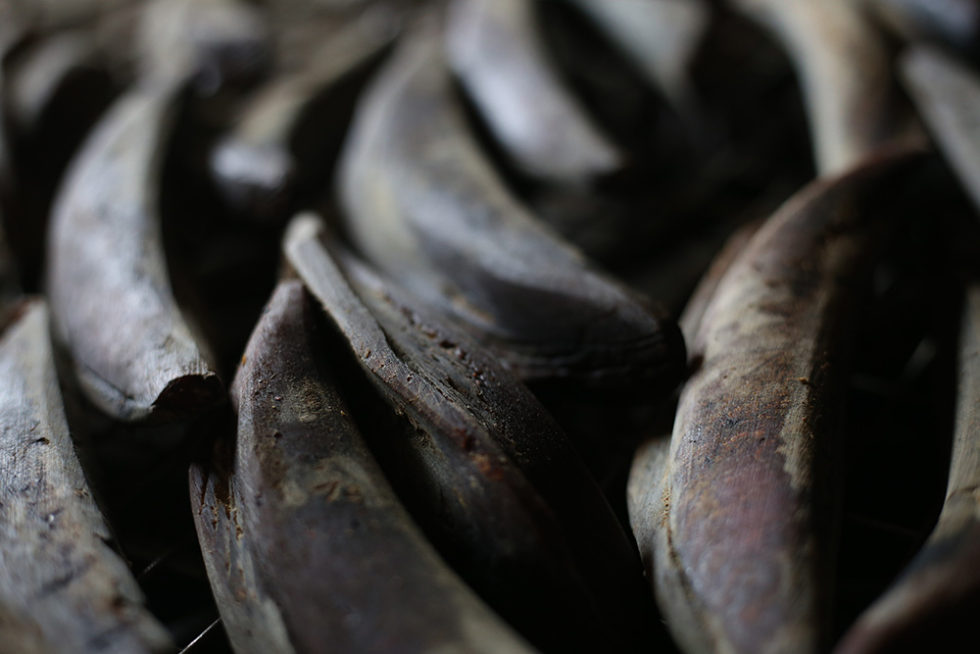
For the flavor that has been a pillar of Japanese food culture “Katsuobushi” created with the traditional method
Katsuobushi -Makurazaki, Kagoshima prefecture
Registered with UNESCO as an intangible cultural asset “Japanese food; Japanese people’s traditional food culture.”One of its salient features that we can mention is surely its deft use of “umami.”In particular, the umami filled dashi stock extracted from kombu seaweed, dried sardines and katsuobushi can be said to have been the representative taste acting as a pillar of Japan’s traditional food culture.Makurazaki city in Kagoshima prefecture is a fishery city known as a fishing harbor for skipjack tuna.The traditional method of making katsuobushi begins with a process called namakiri (cutting while fresh).I visited a site where katsuobushi production takes place by hand.
It is said that the method of producing katsuobushi was transmitted to Makurazaki in Kagoshima prefecture approximately 310 years ago. Makurazaki is a production area for katsuobushi, indispensable in the creation of dashi stock which is the pillar of Japan’s food culture, and it is number one in Japan in terms of production levels. The approximately 50 katsuobushi factories within the city produce some 40% of the national total. The salient feature of katsuobushi produced in Makurazaki is the fact that it is produced by the traditional method under strict quality control management. Katsuobushi continues to be made the old-fashioned way.
Nishimura Asamori Shoten has been producing katsuobushi since its establishment in 1950.
The company president Mr. Kyo Nishimura says “I want to make safe, high quality katsuobushi that can be eaten with peace of mind.” 7:30 A.M. At the processing plant, work begins with the namakiri process being performed on frozen skipjack tuna caught in Makurazaki harbor. The fish is beheaded, disemboweled with a knife, and a cut mark is made on the back and stomach to enable workers in later processes to easily differentiate between obushi (katsuobushi made from the back) and mebushi (katsuobushi made from the stomach). Mr. Nishimura says “We process about 6 t per day. If the fish are 3 kg in size then that works out to about 2,000 per day.” Big fish are filleted then quartered. The connected workflow is done speedily. Cases of neatly arranged skipjack tuna pile up one after another. Then they are soon sent to be boiled. Depending on the size of the fish, the temperature in the cauldron is around 96°C and it takes about 2 hours for the boiling process to be completed. The scum that floats to the surface is removed manually. Mr. Nishimura says “By going to all this trouble I believe that we can achieve a clear taste.”
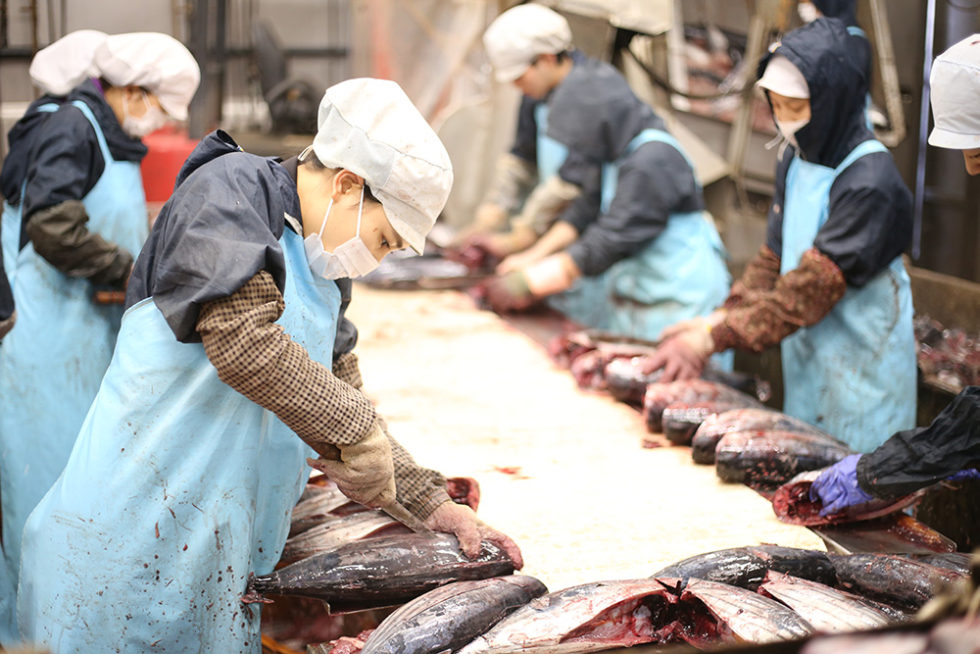
The namakiri process starts from the early morning.
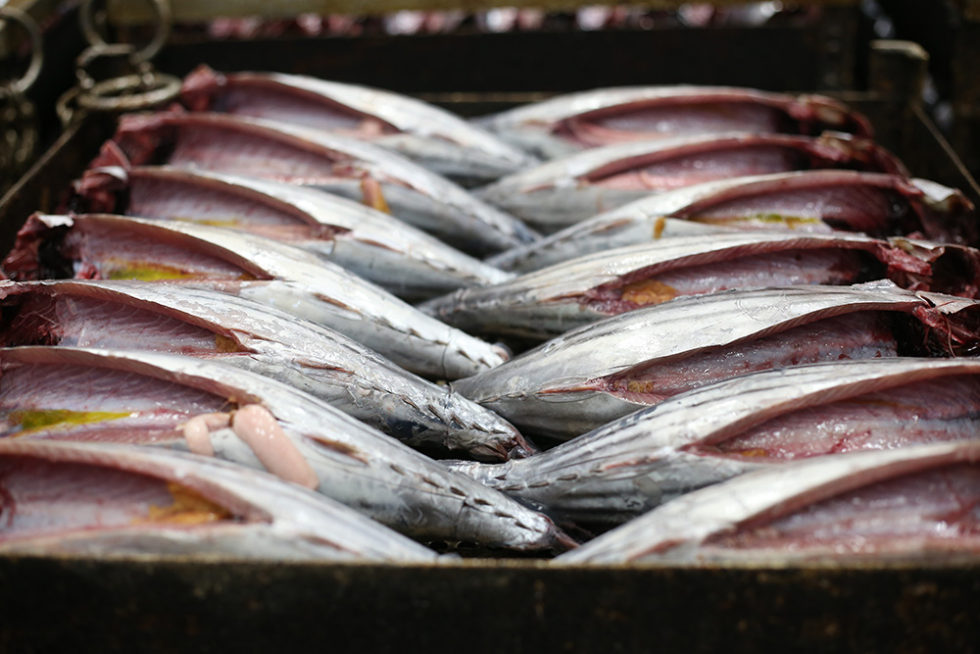
Beheaded, disemboweled skipjack tuna
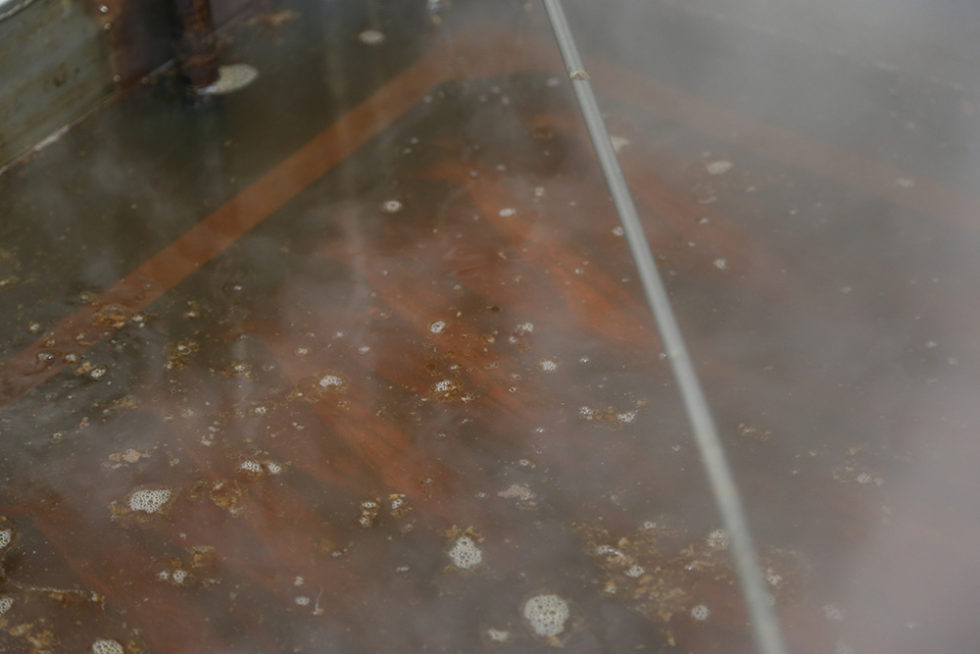
The cases are piled up and the fish boiled in the cauldron
After boiling, the boning process follows. The still warm skipjack tuna is divided into 4 pieces, obushi (back) and mebushi (stomach) and one by one the bones are skillfully removed with tweezers. The katsuobushi takes shape with this process. In the case of honbushi (the ones that have been filleted and quartered at the time of namakiri) after boning the minced flesh of the skipjack tuna is rubbed on to restore the appearance awaiting the process to achieve a beautiful finished product. According to Mr. Nishimura, this restoration of the appearance is an important part requiring an artisan’s technique, and one where the workers can show off their skills. The artisan’s expression says “This very fragile so I better finish it with a care.” I hear that by rubbing the minced flesh on evenly, the moisture is completely removed overall.
Then a fire is kindled with firewood and the product is taken to the drying room where hot air of around 80 to 90°C has been created. I’m told that here the product will be cured and dried thoroughly for two days and the surface will have a crisp finish. Then it will be placed in the drying room called a “Kyuzokko” and cured for around 3 weeks. At this point the product is called “arabushi.”
After some 3 weeks have passed the skipjack tuna is as hard as a rock. From here, the katsuobushi that has the surface shaved and mold added then dried with the process being repeated, with the product being then left to mature for about 3 to 5 months is a high class product called honkarebushi (true dried fillet).
Mr. Nishimura explains “Adding the mold removes the fishy smell and the drying makes it fragrant and delicious.”
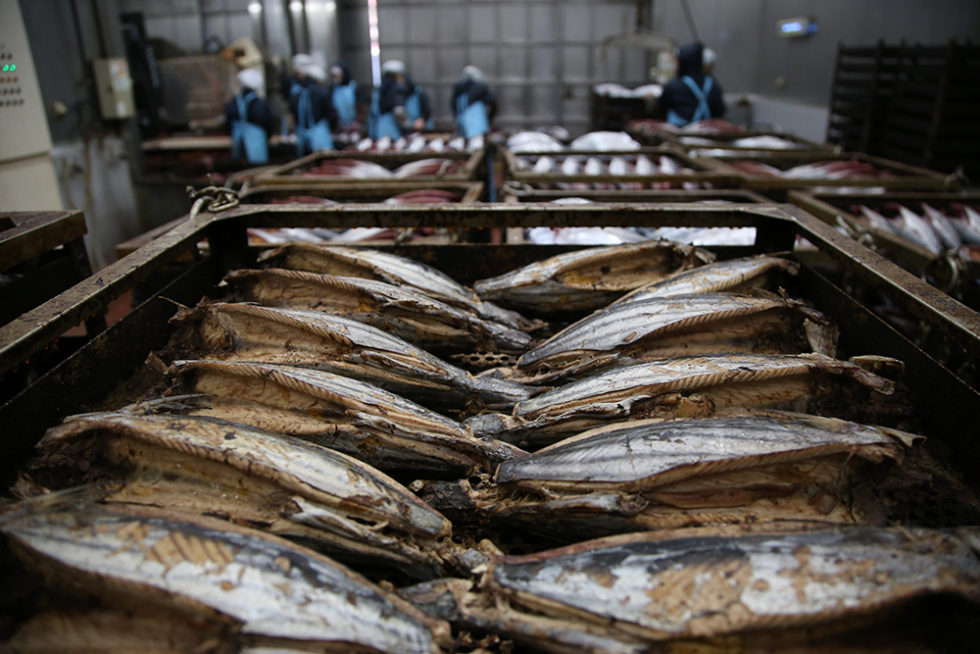
Skipjack tuna after boiling
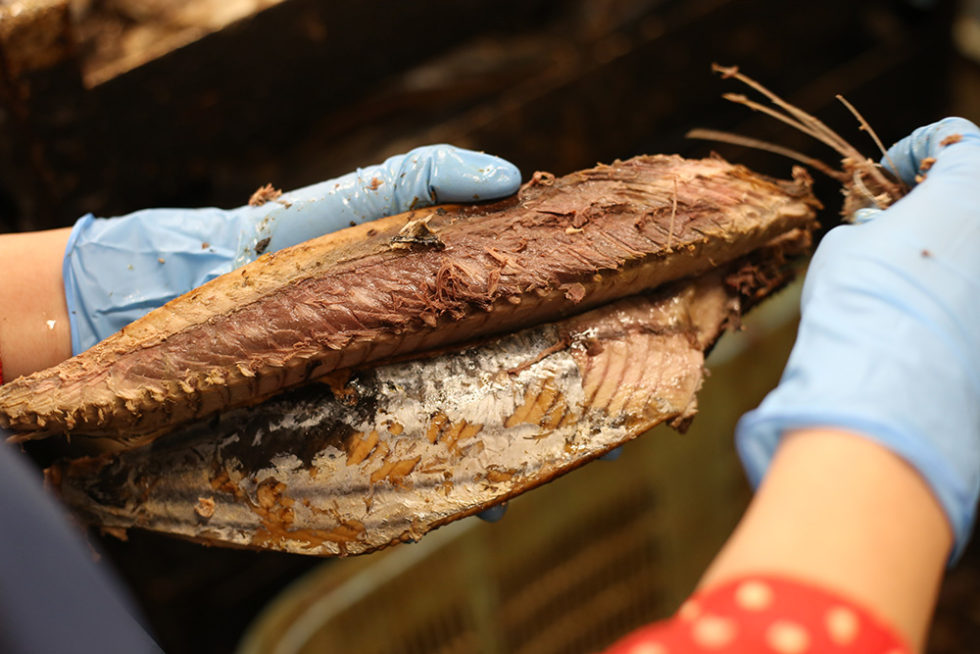
Boning done by hand
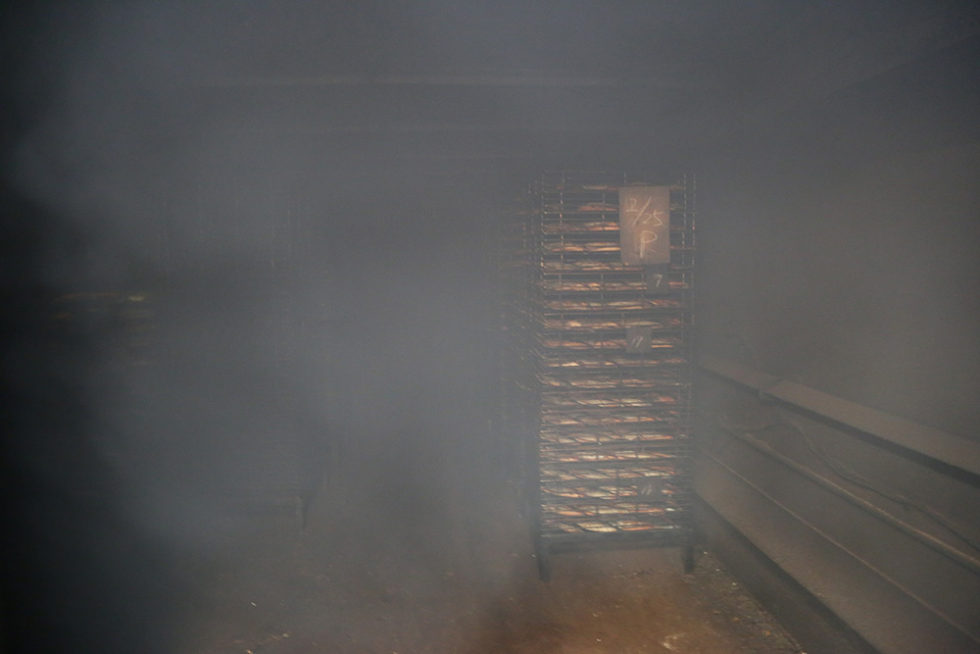
The drying room at the processing plant (The first drying room used)
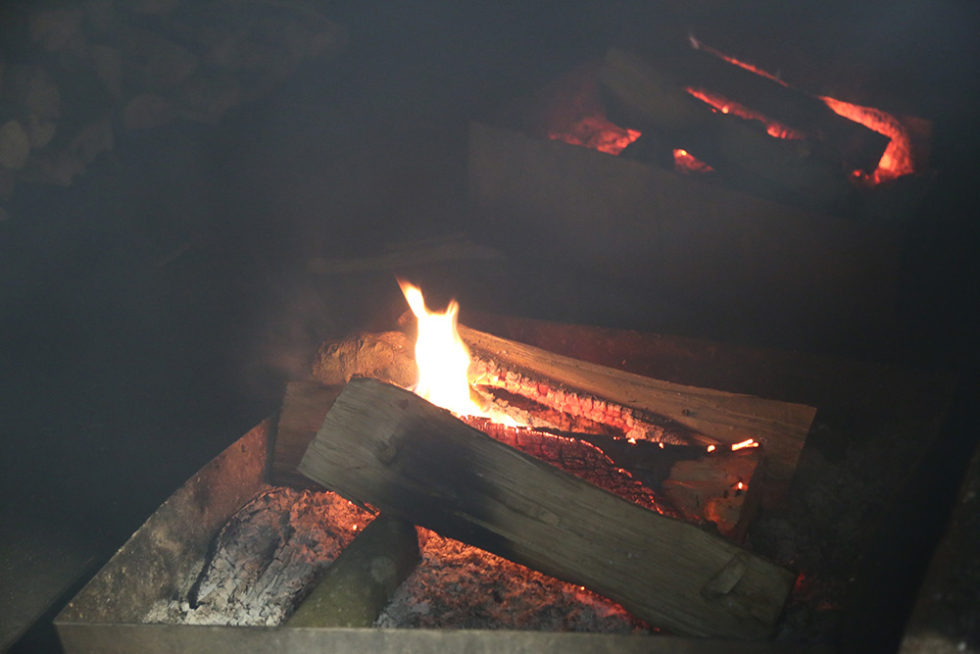
Broadleaf trees such as sawtooth oak and Japanese oak are used for firewood
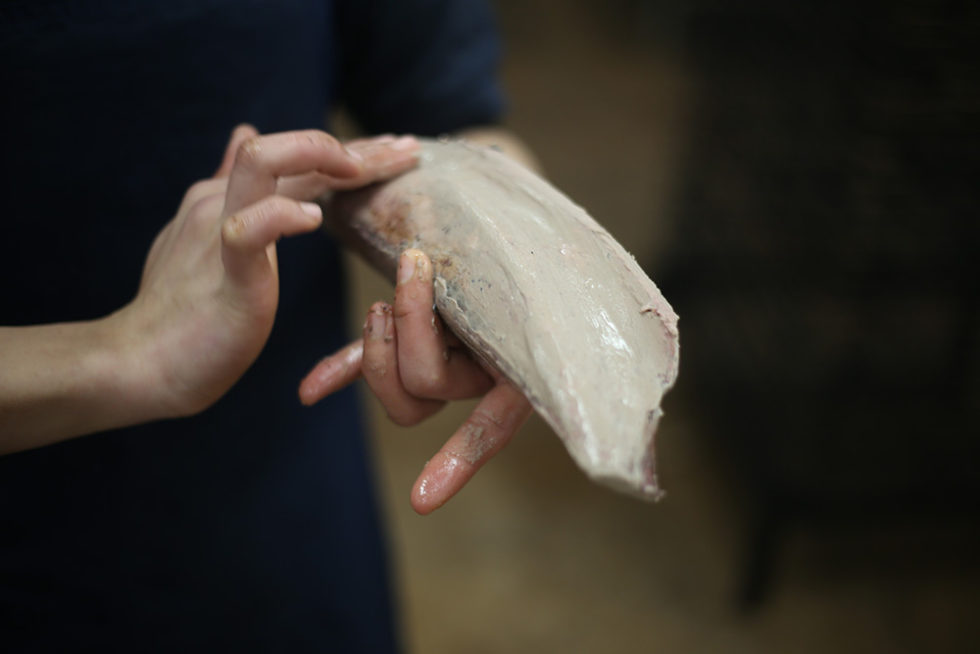
The appearance restoration process of rubbing on minced flesh
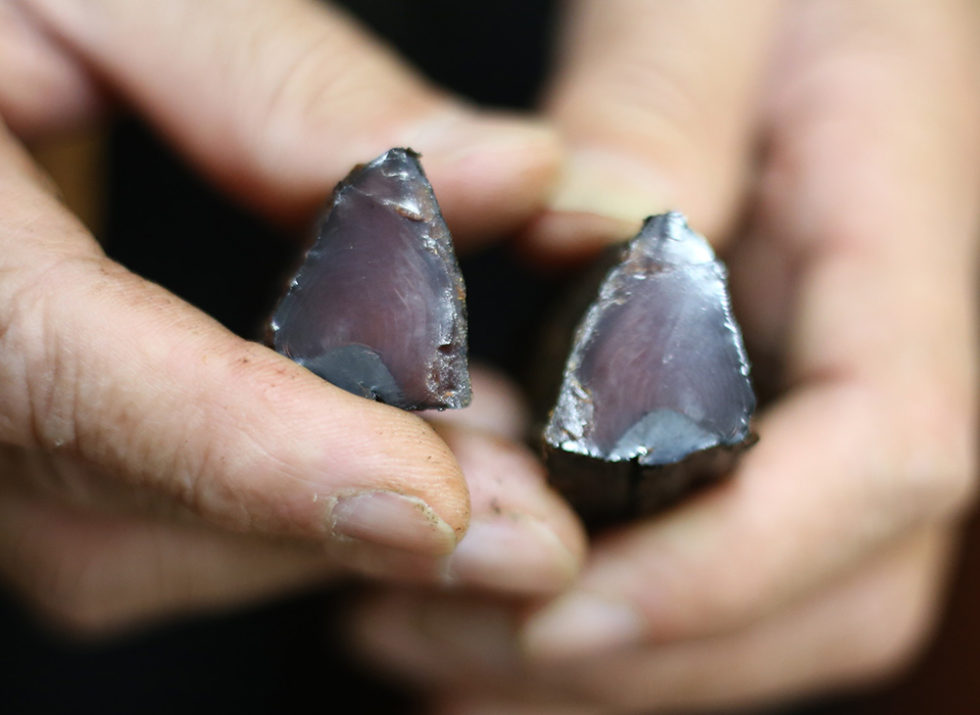
The cut surface of the arabushi after curing. It shines like a precious stone
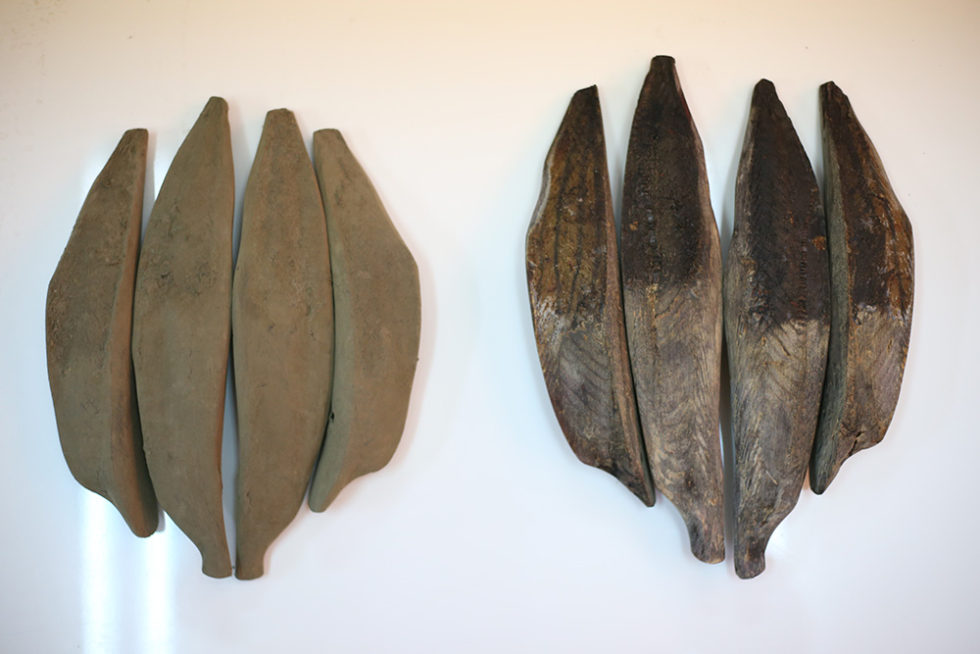
Hadakabushi (shaved fillet lit. naked fillet) (left) Honkarebushi (right). Hadakabushi is arabushi whose surface has been shaved
Now, one of the traditional dishes in the northern part of Kagoshima prefecture is chabushi. This is made by shaving katsuobushi, adding miso then pouring tea over that, and it was drunk by farmers in the interval between agricultural work. It is said to be nourishing when one is fatigued. Mr. Nishimura is working on commercializing katsuobushi, miso and powdered tea as a set to be sold as a souvenir of Makurazaki.
Mr. Nishimura explains “For the sake of the Japanese food culture that we want to preserve, it would be helpful if many people have the habit of cooking after preparing some proper dashi stock. In addition, his desire to have people in Europe become familiar with genuine katsuobushi, he cooperated with 10 other producers to set up a processing plant in France. “I also want to put an effort into disseminating genuine Japanese food culture” he adds with firm conviction.
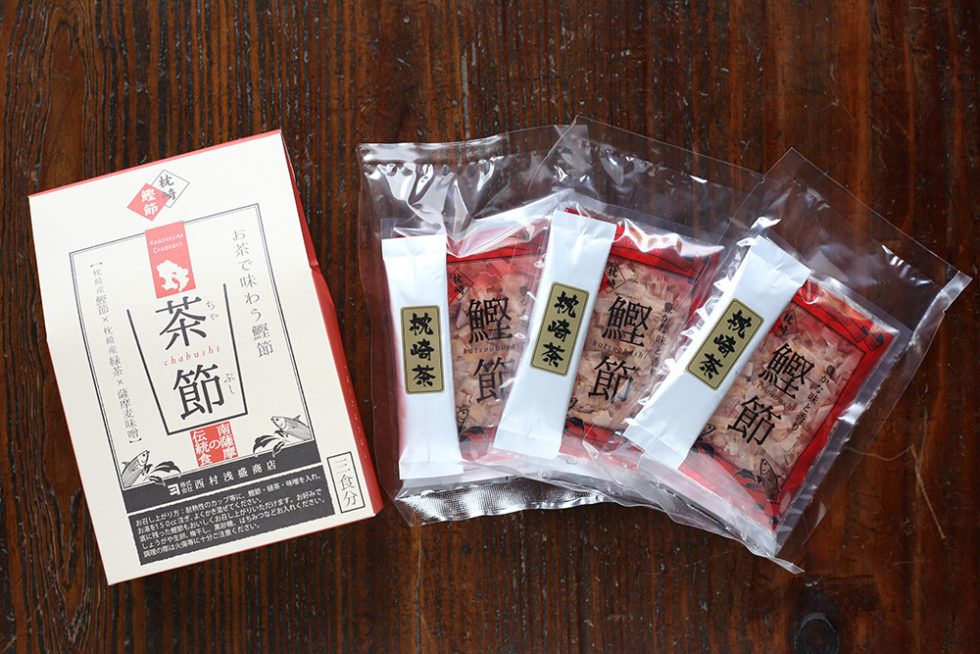
“Chabushi,” said to be the local specialty of the southern part of the Kagoshima Peninsula. You put katsuobushi and miso into tea and drink it
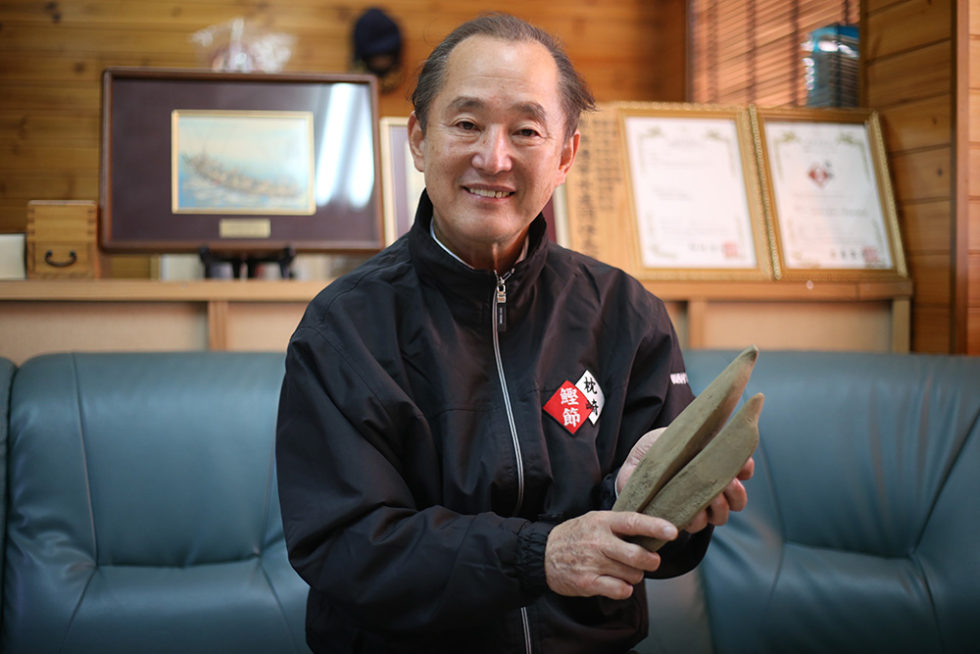
Mr. Kyo Nishimura
Report cooperation provided by/Makurazaki Marine Products Processing Industries Cooperative
Nishimura Asamori Shoten
166 Miyamaecho, Makurazaki, Kagoshima prefecture
TEL: 0993-72-0454

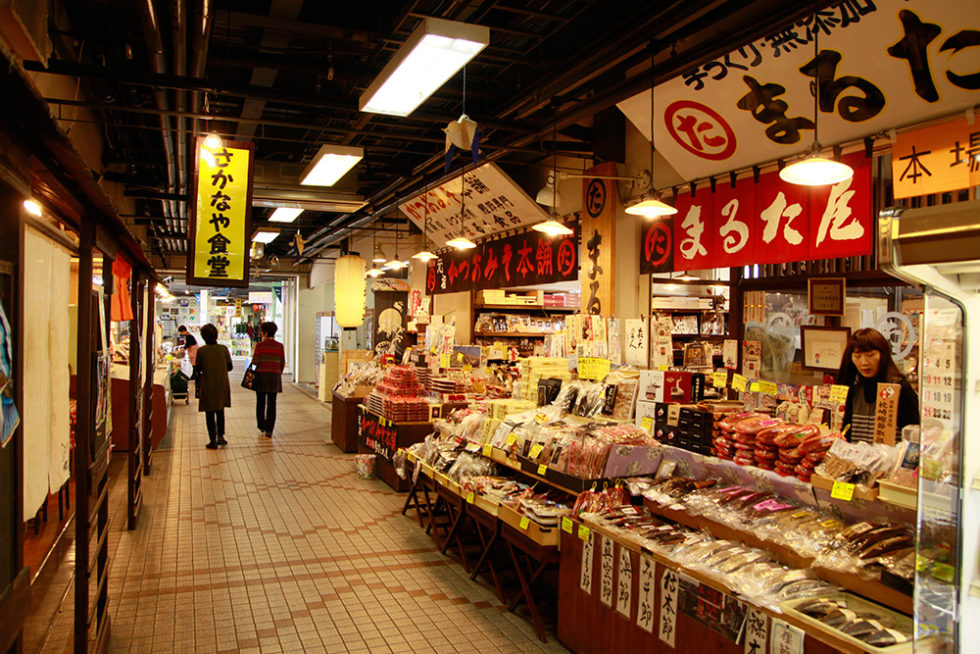
Makurazaki Fish Center